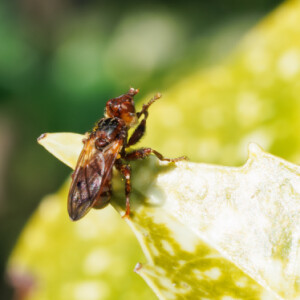Beauty and the beast
I went for a walk around the village this afternoon, more in hope than expectation of finding something interesting, but it turns out that it's been an unusually good winter for Peacock butterflies. This was the third one I found, basking in the sunshine on various footpaths, but it was the only one that let me get close enough for detailed photos. In fact it was completely relaxed until about two seconds after I took this shot, when I began to sink gently onto one knee with a view to capturing a ground-level image. It immediately zoomed off, coming to land about five metres away between the rows of a newly sprouting crop - at which point I tipped a metaphorical hat towards it in apology for having pushed its tolerance too far, and walked on.
I'm always slightly in awe of Peacock butterflies. They're one of our biggest butterflies, and surely one of the most spectacular, with a colour scheme that seems to belong to a much hotter and sunnier environment than ours, and yet they'e a common sight in gardens throughout most of the UK. They're also long lived: this one will have emerged in July or August last year, and then spent a few weeks feeding itself up before finding a dark, dry place and going into hibernation - so it's around eight months old, and it's spent the past few months in a shed, a crevice in a tree, or perhaps a log pile, but it's in excellent condition, with just a couple of tiny wing nicks. You'd think insects as conspicuous as this would be picked off very easily by predators, and I dare say many of them are, but the excellent UK Butterflies explains very well how the combination of those threatening eye spots and their highly cryptic underwings help to protect them from predation.
If the Peacock represents the 'beauty' of my title, the 'beast' is the Conopid fly in my second image. Entomologists tend to get a bit snippy with value judgements like this, and I understand why, but I make no claim to be a scientist, and I find myself unable to approve of the lifestyle of the thick-headed flies, however valuable they are within the ecosystem as a whole. That said, they are fascinating - especially if you have a taste for the gruesome. These are the flies that are commonly called "beegrabbers", because that's exactly what the females do: they ambush a bee as it forages, seize hold of it, and use their specially adapted ovipositor like an old-fashioned tin opener to lever apart the plates of the bee's abdominal skeleton so that they can insert an egg into the abdominal cavity. The larva develops inside the bee over the next couple of weeks, and there's evidence that it somehow changes the bee's behaviour during this time so as to favour the growing parasite. When the larva pupates, the bee dies, having been prevented from completing its own life cycle normally.
The Conopidae can be hard to identify from photos, but I'm pretty sure that this one is Myopa pellucida, which according to Steven Falk has a particular penchant for the Ashy Mining Bee, Andrena cineraria. Given that it's only a couple of days since I expressed my delight at the resurgence of this species in my garden, you'll understand my dismay at the appearance of its parasitoid - but I know there's no evidence that parasitic insects such as Conopid flies, Nomad bees or Bee-flies have an adverse effect on populations of their host species. In fact scientists tell us that the presence of these parasitoids and kleptoparasites is evidence of a healthy population of their hosts, which is why we should celebrate them and keep our negative value judgements to ourselves. Yay for the beegrabber!


Comments
Sign in or get an account to comment.


